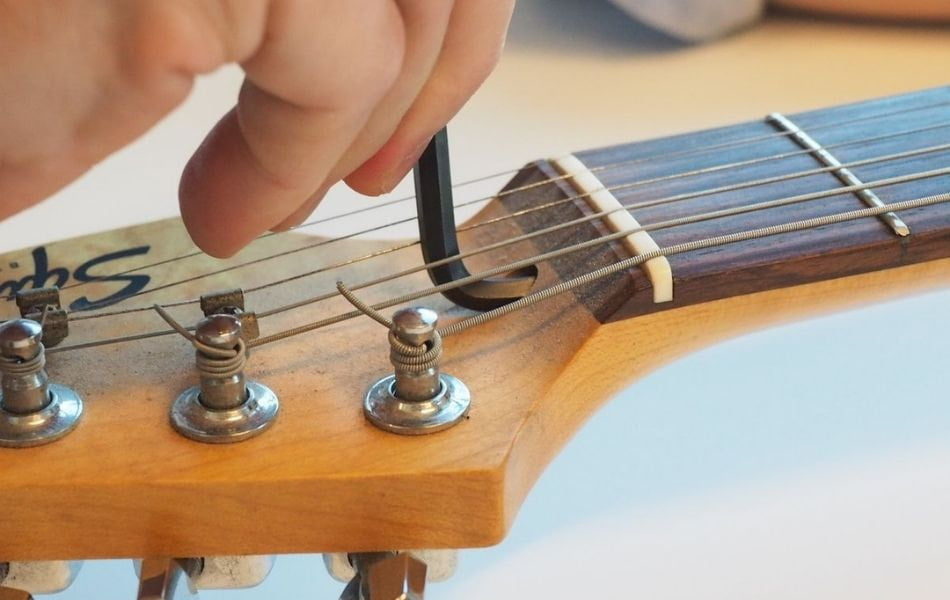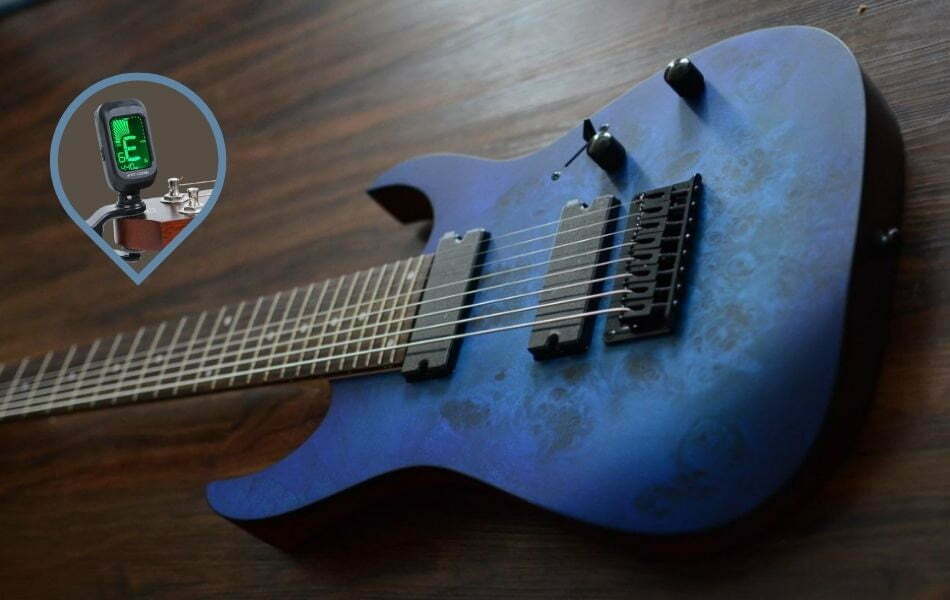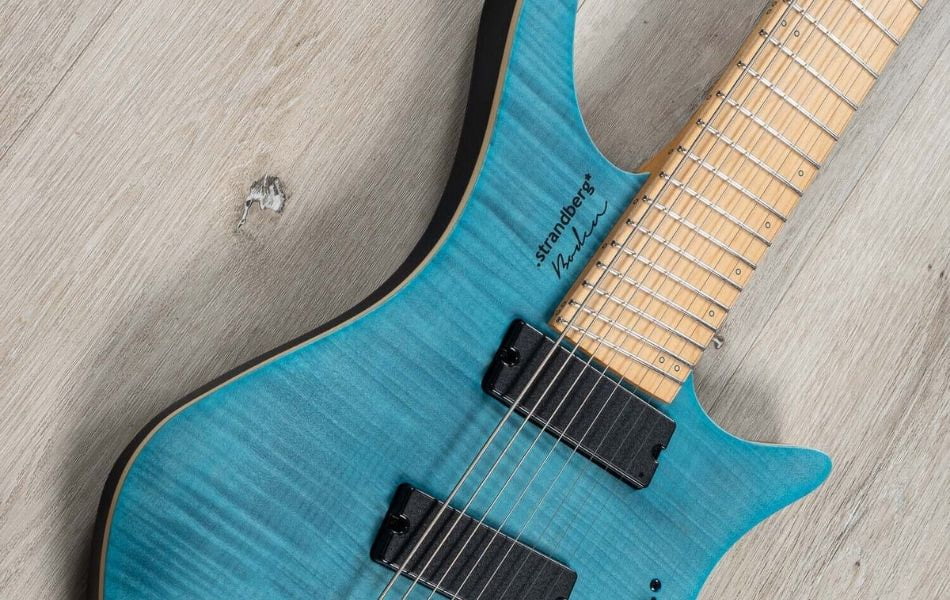If you’re a guitarist seeking to explore the way of 8 string standard tuning. With two extra strings compared to the traditional 6-string guitar, the 8-string instrument opens up exciting new avenues for creativity and musical expression. In this comprehensive guide, we will delve into the fundamentals of 8-string standard tuning with many methods. Whether you’re a seasoned musician or a curious beginner, this must-know guide will be your companion on this thrilling musical journey. Let’s dive in!
Guide for 8 string standard tuning
8 String Standard Tuning requirements
Loosen the Strings: If your guitar has been tuned to a different tuning or has been stored for a while, start by loosening all the strings to reduce tension. Therefore, this will help avoid any potential damage or snapping of strings when tuning up.
Tune the 8th String (F#): Begin by tuning the 8th string (the thickest one) to F#. This note should be one octave below the standard low E string on a 6-string guitar.
Tune the 7th String (B): Move on to the 7th string and tune it to B. This note should match the standard 5th string on a 6-string guitar.
Tune the 6th String (E): Next, tune the 6th string to E, which is the same as the standard 6th string on a 6-string guitar.
Tune the 5th, 4th, 3rd, and 2nd Strings (A, D, G, B): Continue by tuning the remaining strings in the following order: A (5th string), D (4th string), G (3rd string), and B (2nd string). These pitches should be the same as the corresponding strings on a standard 6-string guitar.
Tune the 1st String (E): Finally, tune the 1st string to E, which is the same as the standard high E string on a 6-string guitar. This will complete the tuning process.
Double-Check the Tuning: Once all the strings are tuned, it’s a good practice to double-check the tuning using your tuner. This will ensure 8 string standard tuning accurately tuned and ready for playing.

Using tuner devices
A tuner device, callled “guitar tuner,” is a small electronic device designed to help musicians tune their instruments accurately. It is an essential tool for guitarists, bassists, and other stringed instrument players to ensure that their instruments are in tune with the correct pitches.
Guitar Tunio – Guitar Tuner app
Guitar Tunio is a well-designed application featuring a user-friendly interface, ensuring effortless navigation for users. In addition, the app is compatible with both iOS and Android devices. By directly capturing the audio frequency through the mobile device’s speaker, it analyzes the data and provides users with accurate results, facilitating seamless string adjustments as needed.
Furthermore, Guitar Tunio offers an extensive range of tuning choices for musicians, encompassing standard tuning as well as numerous alternative tunings such as drop C, open G, drop A, and half step down, among others. The app serves a wide variety of musical instruments, including guitar, bass, ukulele, mandolin, banjo, and violin. 8 string standard tuning become more easily with the app.
Clip-On Tuners
These tuners can be clipped onto the headstock of the guitar or bass. They detect the vibrations from the instrument and display the note being played and whether it’s in tune or needs adjustment. Clip-on tuners are popular for their portability and ease of use.

Pedal Tuners
Pedal tuners are stompbox-style tuners that are placed on the floor as part of a guitarist’s effects pedalboard. They often have a large display and are easily accessible during live performances. When activated, the tuner mutes the signal from the guitar, allowing the player to tune silently.
Handheld Tuners
Handheld tuners are compact standalone devices that can be held in the hand. They are equipped with a display screen, microphone, and sometimes input jacks for direct connection to the instrument. Some handheld tuners have additional features, such as metronome functions.
8 String standard Guitar Drop Tunings
As an 8-string guitar has an extended range, you can apply drop tunings to it just like you would with a 6-string guitar. Drop tunings involve lowering the pitch of one or more strings to achieve different sounds and playing styles. Here are some common drop tunings for an 8-string guitar:
Drop E (E B E A D G B E): In this tuning, the 8th string remains the same as in standard tuning (E), but the 7th string is dropped from B to A. The rest of the strings (6th to 1st) are the same as standard tuning.
Drop D (E B E A D G B D): This tuning is similar to Drop E, but the 8th string is also dropped from E to D, matching the pitch of the 7th string.
Drop C (E B E A D G C E): In Drop C, both the 8th and 7th strings are dropped. The 8th string goes from E to C, and the 7th string goes from B to A. The rest of the strings remain the same as in standard tuning.
Drop A# (A# F A# D# G C F A#): In this tuning, all strings are dropped, giving a very low and heavy sound. It’s often used in extreme metal genres.

8 String standard tuning is a gateway to a world of endless musical possibilities. Applying the ways that we suggest, you will surely soon succeed and conquer the heights of music. Armed with the knowledge from this must-know guide, embark on your musical journey with confidence and passion
